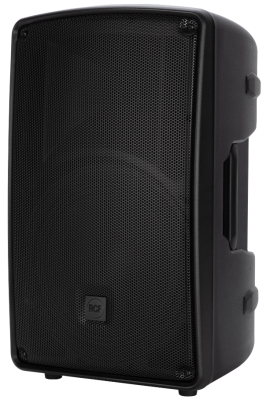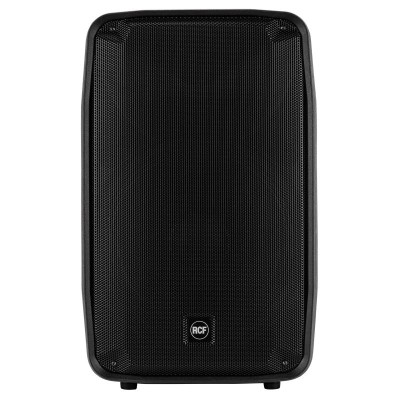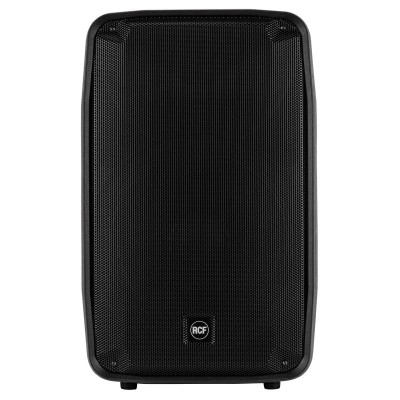RCF D Line
RCF D Line Series – What’s the same
Much like the ART series entering its 9th generation, the 5th generation of the RCF D Line series packs many upgrades and refinements. Over the years, RCF has been able to tweak and modify the internal components and external appearance of this line to produce a loudspeaker with phenomenal value for the price. The speaker is optimized for musicians and DJs on the road as well as rental companies looking for a speaker that can take a beating. Below are a few features shared among all models.

Cabinet Design
The cabinet for all D Line series speakers is compact for the respective woofer size. This makes the speakers easy to transport and set up. Despite their size, the cabinet is robust and “rental proof,” as RCF says. The propylene composite cabinet has 3 handles with rubber grips and a design allowing the speaker to be used in pole-mount or monitor configurations.

Powerful Transducers
RCF puts a lot of R&D into its transducers. Even within the D Line series speakers, they come in a variety of sizes to match the individual speaker. They’re built to handle high temperatures and extended uses. Behind each one is a ferrite magnet that provides maximum power with minimal weight. The drivers are also cooled with specially designed cooling fins for optimum efficiency.

FiRPHASE Technology
In a nutshell, it allows for coherent distribution of sound for all listeners without phase distortions. Using an algorithm and measurement of the speaker phase, the D Line Series speakers are able to adapt the phase without messing with equalization. They’re also able to take into account the weak points of the transducers and the resonances/cancellations of the cabinet. While RCF has an in-depth technical paper on the science behind this audio magic, we just know it means serious sound.

Simple Ins and Outs
Like the ART 9 series, RCF has opted to take a simple approach to connections. The D line series itself has a very straightforward mixer section. The mixer has a single XLR and 1/4″ input connection with balanced output. The input sensitivity can be switched between the mic and line with a toggle switch. A volume knob, low-end boost toggle, and indicator lights round out the back speaker panel.





